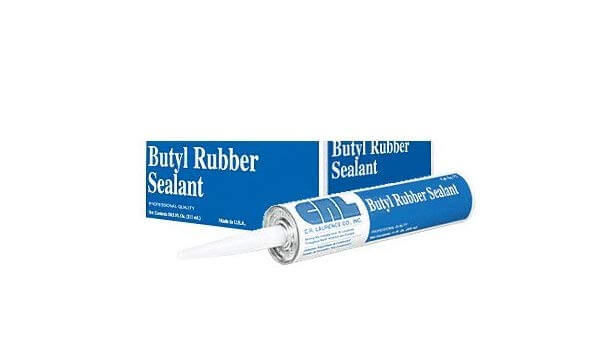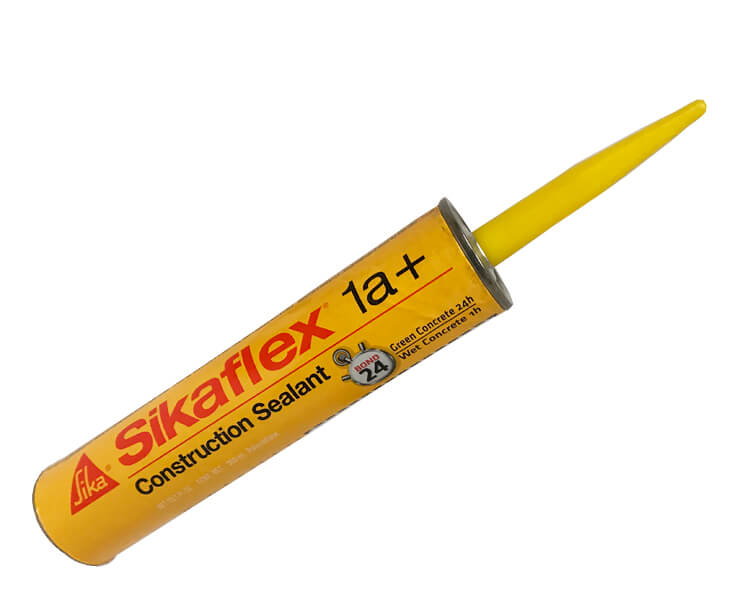Looking for the best flashing sealant? Keep reading this article for info on the best products, what it is, and how to use it.
Roofing companies often report that the most calls they get have to do with leaks around chimneys. When this happens, it’s usually tied to the condition of the roof’s flashing around the chimney that’s letting moisture in.
The Best Flashing Sealant – When to use
Clients call them at all hours saying that water is getting in through the roof. When they get out to the property, they often discover the cause of the leak is faulty flashing or deteriorated flashing sealant.
It’s a relatively easy problem for a skilled contractor to fix but some leaks, if left alone long enough, can cause extensive damage inside your property. Getting the right sealant on your flashing is the best bet.
Effective roof flashing around a chimney includes two layers. One laying involves tightly playing sheet metal around the chimney edges. In the second layer, more sheet metal is inserted into the chimney mortar joints and folded over to cover the first layer.
The flashing’s design is meant to prevent as much water from getting inside the seams between sheet metal layers as possible.
After the sheet metal flashing has been installed, applying proper sealant is critical to its success. Without sealant, eventually, water is going to work its way in between the sheet metal down into your roof.
With roof flashing or flashing on any other masonry work, the corners are especially vulnerable because of the bends.
What to Look for in a Sealant
In the past, a lot of masons used bituminous mastics when lapping flashing. However, the masonry and roofing industries have come a long way since then.
Now there is a wide variety of choices, and the best flashing sealant for you will depend on your use case. Here is a brief overview of some of the different types of flashing sealant and how they work.
Butyl Sealant
image via amazon
Butyl sealant has been around a long time and is particularly popular in the construction industry because it’s cost-effective. Butyl sealants come either in a long plastic tube that will work with a caulking gun, or a tape roll product.
It does the trick when it comes to flashing sealant but may not be as adaptive as some other higher-end sealants.
Polyurethane Sealant
image via dhcsupplies
Masons, contractors, and home DIYers choose polyurethane sealants for their flashing more than any other sealant. The polyurethane sealant will be the sealant you find most available in your neighborhood home improvement stores and you’ll see most contractors using them as well.
They come in different colors too, so you can find something for your flashing that matches the color or shade of your home. These sealants typically have a life expectancy of around 5-10 years. The difference depends on where they’re being used.
In places with wider temperature swings or places that take a beating from heavy rains, winds and other harsh weather, the sealants can wear out faster.
Polyurethane sealants are great because they don’t take a long time to set. Usually, they’re good to go after around four hours.
Modified Polyether Sealant
image via bostik
This type of sealant is a relatively new entrant into the sealant world. Polyether sealants are made from modified silicone. The benefit of the material is that it gives you the ability to apply the sealant with a gun, so it’s a lot faster and easier to get clean lines on your flashing.
It’s also a very resilient material. Polyether can be used in very cold temperatures and will still cure well. The ability to use polyether in any climate or weather condition can be very valuable.
A Sealant to Go with a Flashing
As we’ve already stated, which sealant you use will depend on what type of flashing you’re using. There’s no point paying top dollar for a premium sealant if you live at a steady temperature and are using a material with which any sealant will do.
Likewise, you don’t want to buy the cheapest sealant only to have it fail under harsh conditions. Here are some of the common types of flashing and what type of flashing sealant is best.
Asphalt Flashing
This is the most common flashing material in the US because of its low cost and durability. It’s stable and most masons and contractors are very familiar with it, so it’s less likely mistakes will be made during installation.
Butyl or polyurethane sealant will do a terrific job of sealing your flashing and making it water-resistant.
Thermoplastic Polyolefin (TPO) Flashing
TPO is a common commercial roof material that consists of a membrane resistant to cracking and breaking. Homeowners and developers have adopted the versatile material to use on flashing as well.
This type of flashing can be sealed with butyl or primed polyether. You also have the option of heat-welding the flashing together, which may make any sealant unnecessary.
EPDM Flashing
Yet another crossover from the world of commercial roofing, EDPM is a flexible membrane that’s easily installed. It’s easy to cut, so molding to your masonry project’s corners and lines is much simpler.
EPDM is made from rubber and responds well to polyether sealants.
The Best Will Depend on You
The best sealant for your flashing will depend on your circumstances. Where do you live? What kind of climate do you have? What material are you using for your flashing? The answers to all of these will influence which is the best sealant flashing.
If you’re unsure, stick with the tried and true polyurethane sealants. It is always a good bet. It’s a multi-use sealant that is compatible with most roof and flashing materials and has a good lifespan once it’s on.
Whatever sealant you choose, make sure to test it out before applying it to any final project. You will want to feel comfortable using the sealant when you finally go to seal your flashing.
Any small mistake can lead to a roof or chimney leak that can cause serious water damage. With a bit of practice, you’ll have peace of mind knowing your roof or chimney is waterproof and nothing’s getting through your sealant.





